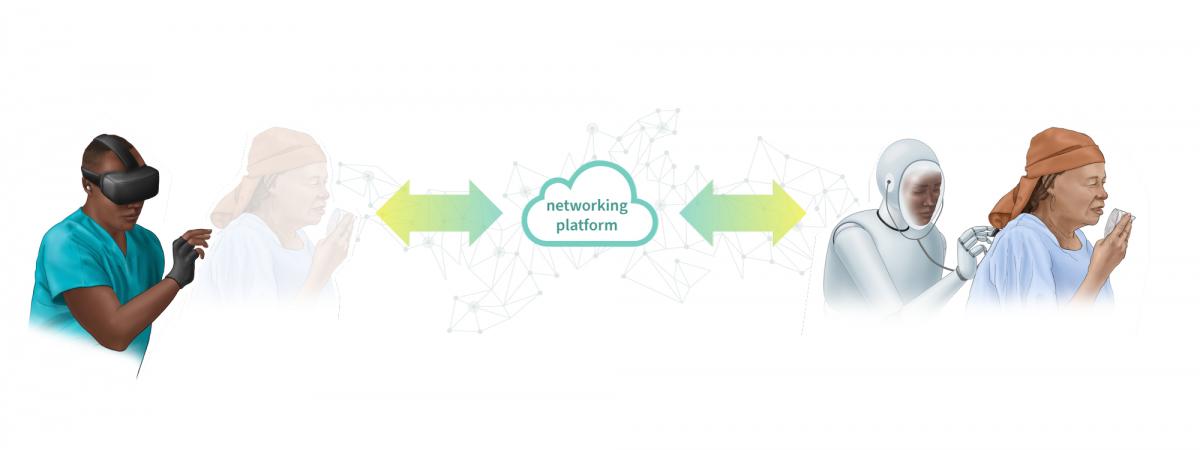In today’s healthcare systems, geography presents an undeniable hurdle: Whether a person lives in a rural area far from a hospital, an elderly grandparent is quarantined away from his or her family, or a doctor needs to assess a patient who isn’t nearby, removing physical distance is almost always a necessity.
At the Human Fusions institute, we believe that doesn’t need to be the case. Using our NeuroReality™ platform, we’re working to eliminate medical deserts, protect healthcare providers, connect loved ones, and even facilitate surgery through what we call “healthcare avatars”—next-generation, integrated devices that allow for physical connections and haptic feedback at any distance.
Our healthcare avatars will allow healthcare providers to neurologically connect to a device located anywhere in the world, and engage with patients in real time. An extension of telemedicine, these avatars build on the audio and visual aspects of augmented reality by incorporating haptic technologies through direct neural links, allowing the physician manipulating the device to feel sensations, assess point-of-care health diagnostics, and respond in real-time.
In other words? We’re redefining how healthcare is delivered.
Take a look at our healthcare avatar in action.
Learn more about how our healthcare avatar will change how telehealth works.
Home Healthcare
Healthcare providers aren’t the only individuals who stand to benefit from our healthcare avatars. Using this same technology, we’re working to connect family members from a distance.
While family members can monitor their loved ones’ health remotely, the absence of physical care can leave aging or ill individuals to suffer from loneliness and depression. In the case of infectious diseases, patients might have to be isolated and die alone while their family members grieve in solitude.
With our healthcare avatars, we’ll enable family members to remotely touch, hug and hold one another even when they are apart. The ability to connect with loved ones over long distances will enhance mental wellbeing for individuals living alone, and create deeper social connections between people, even when they are geographically separated.


